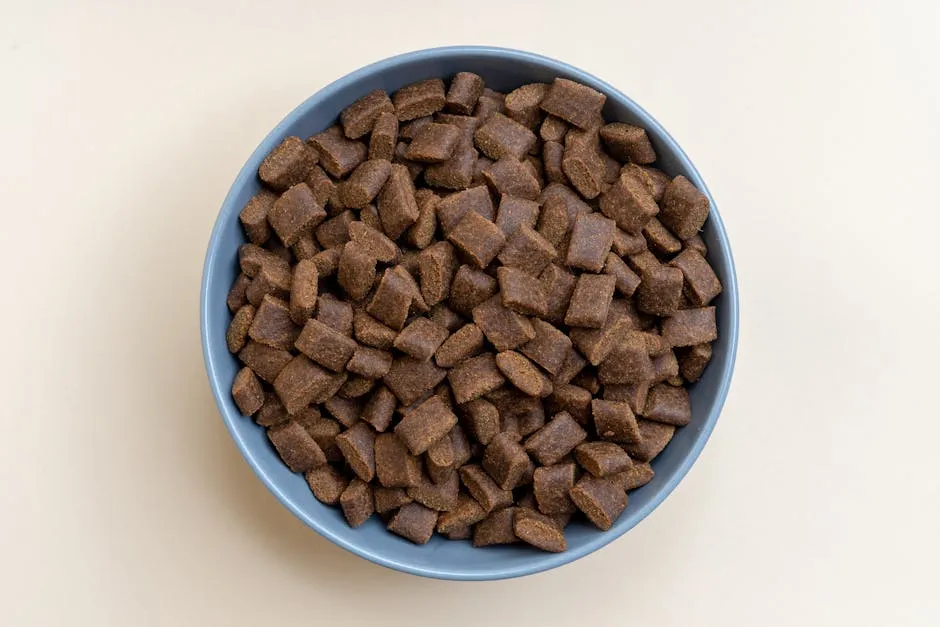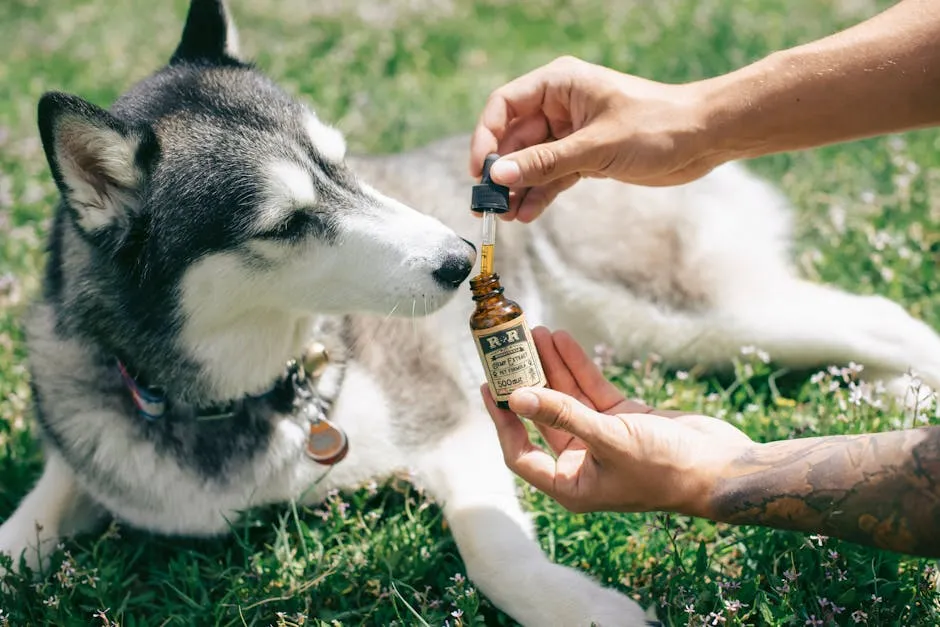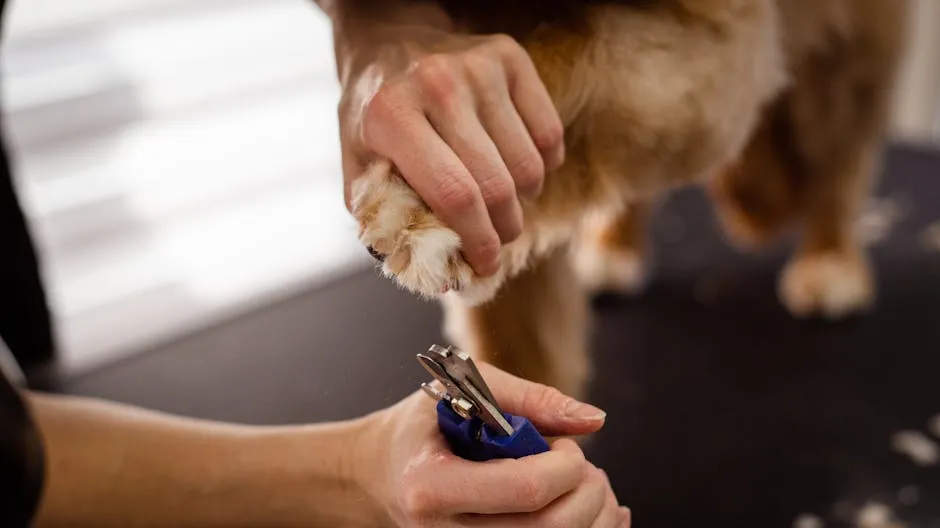Introduction
Fleas and ticks pose a significant threat to our furry friends. These pesky parasites can lead to discomfort and serious health issues. Recently, many dog owners are turning to natural prevention methods. This article aims to provide you with effective, natural solutions for keeping fleas and ticks at bay.
Summary and Overview
Fleas and ticks can cause a range of health problems in dogs. They can lead to skin infections, anemia, and even transmit dangerous diseases like Lyme disease. The traditional treatments, while effective, often contain harsh chemicals that can harm your pet’s health. As a result, more pet owners are shifting towards natural remedies to protect their dogs.

Exploring natural remedies can help pet owners find safer options for flea and tick prevention. Natural flea and tick prevention methods for dogs
This article covers several key areas for natural flea and tick prevention. First, we’ll discuss dietary considerations that can boost your dog’s defenses. Then, we’ll explore home remedies that you can easily make at home. We’ll also look at yard maintenance strategies to minimize infestations. Lastly, we’ll examine essential oils that can effectively repel these pests. By the end, you’ll have a well-rounded toolkit for keeping your dog flea- and tick-free.
Importance of Flea and Tick Prevention
Fleas and ticks are more than just nuisances. They pose serious health risks to your dog. Fleas can cause skin infections and anemia. They can also transmit tapeworms, leading to further complications. Ticks are even more dangerous. They carry diseases like Lyme disease and anaplasmosis. These diseases can affect both your dog and your family.
Statistics reveal the extent of the problem. In the U.S., over 15 million dogs are affected by fleas each year. Tick infestations have also surged, with reports indicating a 200% increase in Lyme disease cases over the last decade.
Preventing fleas and ticks is vital for your dog’s wellbeing. A proactive approach helps maintain your pet’s health and happiness. Regular treatments keep these pests at bay, so your dog can enjoy their daily activities without discomfort.
Moreover, fleas and ticks can cause behavioral changes in dogs. Infestations may lead to excessive scratching and biting at their skin. This discomfort can result in anxiety and irritability, affecting their overall quality of life. By prioritizing prevention, you ensure your dog remains healthy, happy, and free from these pesky parasites.

Speaking of prevention, consider integrating Wondercide Flea and Tick Control Spray into your regimen. This plant-powered solution is effective and safe for your furry friend, making it a great choice for natural flea and tick prevention.
Natural Diet and Supplements
Healthy Diet to Prevent Fleas and Ticks
What you feed your dog matters. A nutritious diet plays a significant role in flea and tick prevention. Whole foods and fresh ingredients boost your dog’s immune system. A strong immune system helps repel parasites naturally.
Certain foods may even deter fleas and ticks. Foods rich in omega fatty acids, like fish and flaxseed, promote healthy skin. Additionally, garlic, when used in moderation, can be effective. It contains compounds that make your dog less appealing to pests. Consider adding a Garlic Supplement for Dogs to your dog’s diet for added protection!

Fresh fruits and vegetables also contribute to a balanced diet. Leafy greens and carrots provide essential nutrients that support overall health. Avoid processed foods, as they can weaken your dog’s defenses against parasites.
Natural Supplements
In addition to a healthy diet, consider natural supplements for extra protection. Garlic is a popular choice. For small dogs, use about 1/6 teaspoon daily. Larger dogs can handle up to one teaspoon. Always consult your vet before introducing any supplement.
Apple cider vinegar is another effective option. Mix it with your dog’s water to help create an inhospitable environment for fleas. Aim for one tablespoon per quart of water. You can find a great Apple Cider Vinegar on Amazon to add to your dog’s routine.
Lastly, foods high in B vitamins, like eggs and organ meats, can help change your dog’s scent. This makes your dog less attractive to fleas and ticks. By combining a wholesome diet with these natural supplements, you can significantly reduce the risk of infestations.

Home Remedies for Flea and Tick Control
DIY Shampoos and Sprays
If you’re looking for natural solutions, homemade shampoos and sprays can be effective. Here are a few easy recipes:
Vinegar Mixture: Combine 1 quart of water with 1 cup of white vinegar and 1 cup of baby shampoo. Use this mixture to bathe your dog once or twice a month. It helps kill fleas on contact and leaves a fresh scent.
Lemon Wash: Boil 4 slices of fresh lemon in 6 cups of water with 1 tablespoon of salt. Let it steep overnight. After bathing your dog, apply this wash to their fur. The citrus aroma deters fleas and ticks.
Essential Oil Sprays: Mix 1 cup of distilled water with 2 tablespoons of witch hazel and 10 drops of cedarwood essential oil. Shake well and spray on your dog’s coat, avoiding their eyes and nose. Essential oils like lavender and lemongrass can also be added for extra protection. For the best results, check out Cedarwood Essential Oil available online!

Traps and Other Home Remedies
Diatomaceous earth is another powerful ally against fleas and ticks. This fine powder is made from fossilized algae and works by dehydrating insects. Sprinkle food-grade Diatomaceous Earth Food Grade in your dog’s living areas, but avoid inhaling the dust. Vacuum the treated areas after a few hours and reapply as needed.
DIY flea traps can also help reduce infestations. Fill a shallow dish with soapy water and place it in areas where fleas are common. The soap traps fleas, preventing them from escaping. A lamp placed above the dish attracts fleas, enhancing its effectiveness.

Yard Maintenance and Prevention
Creating a Dog-Friendly Yard
Maintaining a clean yard is crucial for flea and tick prevention. Start by removing any leaf litter and tall grasses, as these provide ideal hiding spots. Regularly mowing the lawn keeps it at a manageable height and reduces pest habitats.
Cedar mulch is an excellent natural barrier against fleas. Spread it around your plants and in garden beds to deter these pesky parasites. Additionally, regularly cleaning your yard can minimize infestations. Trim bushes and remove any debris that could harbor fleas and ticks. For extra protection, consider using Cedar Mulch in your landscaping!

By implementing these yard maintenance tips, you’ll create a safer environment for your dog, making it less inviting to fleas and ticks.
Essential Oils for Flea and Tick Control
Effective Essential Oils
Using essential oils can be a natural way to repel fleas and ticks. Some oils stand out for their effectiveness. Cedarwood oil is known for its strong repellent properties. It not only keeps pests away but is also safe for dogs when used correctly. Lavender oil provides a calming scent while deterring these pesky insects. Peppermint oil adds a refreshing aroma and helps in easing skin irritation. Lastly, lemongrass oil is popular for its effectiveness against fleas. You can purchase Lavender Essential Oil and other essential oils online for your homemade sprays!

Peppermint oil can be a great addition to your flea and tick prevention strategy. Is peppermint oil safe for dogs
When using essential oils, it’s crucial to follow safe usage guidelines. Always dilute essential oils before applying them to your dog’s skin. A good rule of thumb is to mix 3 to 6 drops of essential oil with one ounce of a carrier oil, such as almond or coconut oil. This dilution helps prevent skin irritation and enhances safety for your pet. Avoid applying essential oils directly to sensitive areas, like the eyes and nose.
However, not all essential oils are safe for pets. Some oils, like tea tree oil, can be toxic to dogs. Always check with your veterinarian before using any new treatment. They can provide guidance on safe options and proper usage. Remember, your dog’s safety is paramount.

Commercial Natural Products
The market offers a range of commercial natural products for flea and tick prevention. These products come in various forms, including sprays, collars, and powders. Sprays are popular for their ease of application and immediate effect. Many dog owners favor collars for their convenience, as they provide continuous protection. Powders are also available, which can be sprinkled in the dog’s environment to deter pests.
Several well-reviewed brands stand out. Wondercide offers a plant-powered flea and tick spray, known for its effectiveness. Earth Animal provides an herbal flea and tick collar that many pet owners trust. Another popular choice is Only Natural Pet, which features a range of natural solutions, including herbal squeeze-on treatments.

These commercial products often highlight their safety compared to conventional options. Many are free from harsh chemicals and artificial fragrances. They provide a gentler alternative while still effectively combating fleas and ticks. As always, consult with your veterinarian to determine the best product for your dog’s specific needs. This ensures both effectiveness and safety in your flea and tick prevention strategy.
Regular Prevention and Monitoring
Consistent flea and tick prevention is vital for your dog’s health. Regularly applying natural treatments keeps these pests at bay. But prevention doesn’t stop there. Routine grooming and inspection play crucial roles in your strategy.
Grooming your dog offers a chance to check for fleas and ticks. Brush your dog’s fur frequently, especially after outdoor activities. Make it a bonding experience! Use a fine-toothed dog comb to catch any hidden pests. Pay attention to areas like the neck, behind the ears, and between the toes. These spots often harbor ticks and fleas.

Monitoring for fleas and ticks can be simple. Look for signs of infestation, such as scratching or biting at the skin. Fleas leave behind tiny black specks, often mistaken for dirt. These are flea droppings, a telltale sign you need to act. Ticks, on the other hand, can be more challenging. They may attach themselves firmly to your dog’s skin. If you find one, remove it carefully using tweezers. Grab it as close to the skin as possible and pull straight out.

By incorporating these practices, you’ll better protect your dog from pesky parasites. Staying vigilant helps catch any problems early, ensuring your furry friend remains happy and healthy.
Conclusion
Natural flea and tick prevention is essential for your dog’s wellbeing. By adopting a mix of dietary, home, and yard strategies, you can create a robust defense. Remember to consult your veterinarian for tailored advice. They can help you choose the best methods for your dog’s unique needs. Keep your pup safe and enjoy your time together!

Please let us know what you think about our content by leaving a comment down below!
Thank you for reading till here 🙂
All images from Pexels





